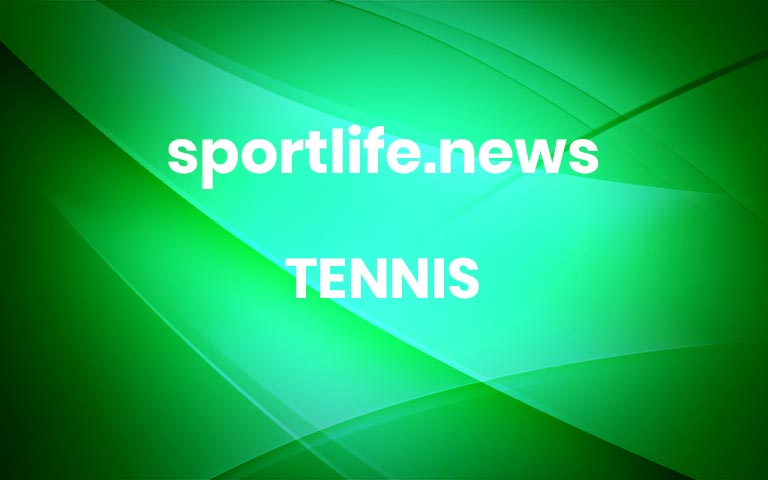For Barbora Krejcikova, Tennis Grew on Her
She first played for fun, but she has gone on to win the French Open and is half of a formidable doubles team.Barbora Krejcikova of the Czech Republic never dreamed of a pro tennis career.She did not wallpaper her bedroom with posters of great Czech players, hit balls against a wall late at night while pretending she was playing match point at Wimbledon or spend hours as a 7-year-old working out in the gym. She did once, however, after winning a local junior tournament, receive an Andre Agassi promotional poster, but does not remember what she did with it.“I always loved tennis, always wanted to play, but only played for fun,” Krejcikova said in a video conversation last month. “I only realized later, when I was 16 or 17 and playing junior slams, that this was something that I would love to do. That I wanted to be in the same locker room as the superstars and play against them someday.”Three years ago, Krejcikova was ranked outside the world’s Top 200 in singles, but reached No. 1 in doubles with her countrywoman Katerina Siniakova. Now she is ranked a career-high No. 3 in singles and is the first player since another fellow Czech, Karolina Pliskova in 2016, to qualify for the WTA Finals in singles and doubles. Pliskova will also compete in the event, in Guadalajara, Mexico, which makes two of the eight singles players Czech.Krejcikova qualified by winning the French Open in June and reaching the quarterfinals at the United States Open and the round of 16 at Wimbledon.“What happened this season, it’s really hard to describe it,” Krejcikova said. “I mean, it’s just perfect. It was this amazing season and really my big breakthrough. I’m really glad that things went the way that they went.”Krejcikova, 25, is the latest in a long line of great Czech women tennis players. Vera Sukova reached the Wimbledon final in 1962. Martina Navratilova reached two major finals while representing Czechoslovakia in 1975, then won 18 majors, including nine Wimbledons, after she defected to the United States.Hana Mandlikova, Jana Novotna and, more recently, Petra Kvitová, are all major champions, and Pliskova, who reached the final at Wimbledon this year before losing to Ashleigh Barty, was ranked No. 1 in 2017. Sukova’s daughter, Helena, won 14 majors in doubles.Barbora Krejcikova, right, with her doubles partner, and fellow Czech, Katerina Siniakova, during a match at the U.S. Open in September.Sarah Stier/Getty ImagesThe Czech Republic won the Fed Cup six out of eight years, from 2011 to 2018. Krejcikova made the team, playing doubles in 2018 and ’19. She made her singles debut in the competition, now renamed the Billie Jean King Cup, in Prague last week.“There is only one reason that so many Czech players have been successful, and it’s because the coaches there all teach good technique,” said Mandlikova, winner of four majors in the 1980s before she served as the coach of the 1998 Wimbledon winner Novotna who, in turn, became Krejcikova’s mentor. “Sometimes that takes a little longer to develop, but it stays with you for your whole life.”Krejcikova was not unknown as a junior. At 17 she won the 2013 European Junior Championships in singles and doubles. The same year, she and Siniakova captured junior doubles titles at the French Open, Wimbledon and the U.S. Open.Still playing together on the WTA Tour, the pair won the French Open and Wimbledon in 2018 and the French this year. They also won a gold medal at the Olympics in July. This is the third time they have qualified for the WTA Finals, where they were runners-up in 2018. Krejcikova is also a three-time Australian Open mixed doubles winner.“I remember when we played the Australian Open in 2020, she was in qualifying for singles and was ranked like 120, 130 in the world,” said Nikola Mektic, half of the world No. 1 doubles team. “To be Top 5 now is a major accomplishment for her. And she still keeps playing doubles and mixed, so hats off to her.”Krejcikova has been trying to improve her singles game. From 2014 to 2019, she played the qualifying tournaments at the four majors 16 times, advancing to the main draw only once. She trained for several years at the TK Agrofert Prostejov, the same club where Kvitova trained.“Petra is a legend,” Krejcikova said. “I used to watch her a lot, and I always wished that I could hit some balls with her. But then we were on the Fed Cup team together, and now I have a different perspective. It’s just crazy.”Kvitova said she believed that doubles success had made Krejcikova a better singles player. “It’s the variety of her game and how she is seeing it from the doubles as well,” said Kvitova, a two-time Wimbledon winner. “She has a kick serve too which not many players have. And she has drop shots, slice, topspin, serve and volley, whatever, it’s all there.”In January 2014, when she had just turned 18 years old, Krejcikova and her mother, Hana Krejcikova, knocked on the door of Novotna’s house in Brno, looking for advice. Novotna agreed to work with Krejcikova.“I would say that the connection to her was a huge guiding light for me, and I really appreciate that she gave me her time and wanted to help me and not someone else,” Krejcikova said of Novotna, who died of cancer at age 49 in 2017. Because of Novotna, Krejcikova has become involved with the WTA’s Aceing Cancer campaign.“Even when everyone else was in the Top 100 and I was playing I.T.F.s [International Tennis Federation tournaments] and qualifying, she always told me: ‘Be patient, you’re going to be like me. Keep improving, and you’ll get there one day.’ And, out of nowhere, I’m here.” More



